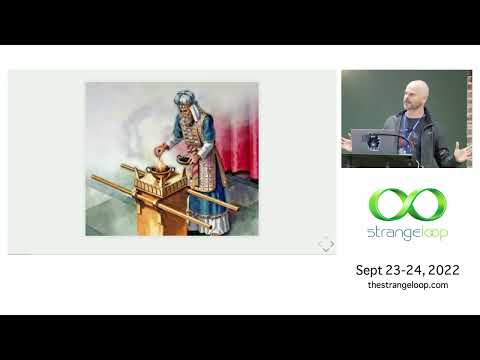Posted on 19th of February 2023
| 911 wordsAs some of you may know, I’ve been a practising Buddhist for some
time, focusing mainly on the teachings of Early Buddhism and
Theravada. One aspect of this practice is keeping up with Uposatha,
which is also present in other schools of Buddhism. Wikipedia
describes Uposatha as
follows
:
The Uposatha (Sanskrit: Upavasatha) is a Buddhist day of observance,
in existence from the Buddha’s time (600 BCE), and still being kept
today by Buddhist practitioners. The Buddha taught that the Uposatha
day is for “the cleansing of the defiled mind,” resulting in inner
calm and joy. On this day, both lay and ordained members of the
sangha intensify their practice, deepen their knowledge and express
communal commitment through millennia-old acts of lay-monastic
reciprocity. On these days, the lay followers make a conscious
effort to keep the Five Precepts or (as the tradition suggests) the
ten precepts. It is a day for practicing the Buddha’s teachings and
meditation.
Uposatha days change from lunar month to lunar month, so there are no
set days for those. But generally speaking, Uposatha is observed about
once a week in accordance to the lunar phases. Which lunar phases are
observed depends on the culture, but there are four phases to this:
the new moon, the full moon and two quarter moons between those.
Theravada cultures generally observe all four, but for example, in Sri
Lanka, they tend to only observe the new and the full moon.
How these Uposatha days are calculated is quite interesting, and
there is a paper published on GitHub by Gambhiro Bhikkhu about
that.
Personally, I have followed these moon days by adding those to my
Apple Calendar via the iCal link provided in the repository above, and
I’ve been quite happy with that. Lately, though, I noticed that I tend
to easily miss these days since I don’t often have notifications on or
my calendar open when these days happen, which made me easily miss
those. That got me thinking that it would be pretty cool to have those
lunar phases on my emacs since that is most likely always open for
me and I’m already mainly doing my time management in org-mode.
So I started digging around on how these could be easily added to my
org-agenda, and then I found a built-in command from emacs that is
at least the first step there called M-x lunar-phases, which
basically prints lunar phases of the last, current and next month. So
I started hacking around to try to get these to my Agenda view.
Not long after starting my hacking in this, I found a nice doc piece
about some ad-hoc tweaks to be made to the agenda from org-mode,
which actually made exactly what I wanted. What it involves is that I
need to build an agenda file with these lunar phases so that the
Agenda view in emacs picks those up.
So first, I needed to add some arbitrary file to my
org-agenda-files. With use-package:
(use-package org
:custom
(org-agenda-files '(<your other agenda files> "/path/to/lunar.org")))
Or normally:
(setq org-agenda-files '(<your other agenda files> "/path/to/lunar.org"))
I happen to have all my agenda files in my Documents folder on my
macOS, so they just get synced across my devices, but naturally, you
can use any path you want.
The lunar.org file itself is pretty simple. Basically, we add a
header to it with a single diary sexp calling a function,
org-lunar-phases, which we soon define:
* Lunar phase
+CATEGORY: Lunar
%%(org-lunar-phases)
The org-lunar-phases itself either isn’t too complicated. It
involves that we pass in the current day to it, which gets passed in
in a relatively odd way via the diary sexp we used above, and after
that we just parse the lunar-phase-list with the current day, or
month and year in this case, since lunar-phase-list returns a list
of lunar phases for the next three months.
(require 'cl-lib)
;; Pass current day to `org-lunar-phases', which is annoyingly in a stupid
:: format, (MM DD YYYY).
(with-no-warnings (defvar date))
(defun org-lunar-phases ()
"Show lunar phase in Agenda buffer."
(require 'lunar)
(let* ((phase-list (lunar-phase-list (nth 0 date) (nth 2 date)))
(phase (cl-find-if (lambda (phase) (equal (car phase) date))
phase-list))
(lunar-phase-names '("● New Moon"
"☽ First Quarter Moon"
"○ Full Moon"
"☾ Last Quarter Moon")))
(when phase
;; Return the phase to the agenda file.
(setq ret (concat (lunar-phase-name (nth 2 phase)))))))Naturally, you can get all fancy with those lunar-phase-names. Maybe
adding emojis and whatnot if you’re into it. But in all simplicity,
that is how you can add lunar phases to your agenda, and it shows as
following in there:
10 days-agenda (W08-W09):
Monday 20 February 2023 W08
Lunar: ● New Moon
Tuesday 21 February 2023
Wednesday 22 February 2023
Thursday 23 February 2023
Friday 24 February 2023
Saturday 25 February 2023
Sunday 26 February 2023
Monday 27 February 2023 W09
Lunar: ☽ First Quarter Moon
Tuesday 28 February 2023
Wednesday 1 March 2023
One thing that I noticed from this was the fact the GitHub link above
that I mentioned. That happens to produce a little bit different
results for these phases. Every once in a while, some phases differ
just a tiny bit. There is a mention that the calculation method used
in that paper was related to how these days are calculated in
Mahānikāya in Thailand, so there might be some variance compared to
the M-x lunar-phases. But personally, I feel it’s close enough and
quite beneficial to me.
Posted on 15th of February 2023
| 614 wordsUpdate: Go decided to go with opt-in telemetry, which at leastpersonally
speaking I’m very happy with.
[https://research.swtch.com/telemetry-opt-in](Read more about it from here.)
Last week, Russ Cox from Go team started a discussion about the
possibility of starting to collect telemetry from Go
usage
.
How do software developers understand which parts of their software
are being used and whether they are performing as expected? The
modern answer is telemetry, which means software sending data to
answer those questions back to a collection server.
I believe that open-source software projects need to explore new
telemetry designs that help developers get the information they need
to work efficiently and effectively, without collecting invasive
traces of detailed user activity.
I have written a short series of blog posts about one such design,
which I call transparent telemetry, because it collects as little as
possible (kilobytes per year from each installation) and then
publishes every bit that it collects, for public inspection and
analysis.
I’d like to explore using transparent telemetry, or a system like
it, in the Go toolchain, which I hope will help Go project
developers and users alike. To be clear, I am only suggesting that
the instrumentation be added to the Go command-line tools written
and distributed by the Go team, such as the go command, the Go
compiler, gopls, and govulncheck. I am not suggesting that
instrumentation be added by the Go compiler to all Go programs in
the world: that’s clearly inappropriate.
Cox also published three part introductory blog post about
“transparent telemetry” that is worth a read:
So this whole discussion got me thinking about my feelings towards Go
and, possibly, its future. First, I enjoy working with Go. As a
language, it’s delightful to work with. It’s safe and fast, and I feel
productive in it. But if the Go developers would introduce something
like telemetry collecting your Go usage, I would have to re-evaluate
the need/desire to use Go in current/new projects. There aren’t many
developers that enjoy something like this in their toolchains. Or that
would willingly allow something like that.
Sure, collecting telemetry in Visual Studio Code hasn’t affected too
much in its popularity. But then again VSCodium is also quite popular,
so clearly, some people hate this kind of telemetry, even in their
favourite tool. Of course, I’m not yet even talking about the legality
of collecting something like that. Because if something like this
would be on by default, even if opt-out is offered, looking at GDPR,
this can be considered illegal.
Of course, Go has had some “trust issues” for many due to it being
language primarily developed, or at least funded, by Google. So
naturally, people tend to have certain ideas and feelings about it
even without touching it. Understandably so. Many people have already
raised criticism in Go, for example, in their usage of Google run
closed source Go module proxy mirror (proxy.golang.org), which is set
on by default. This is also odd since Go’s import system was made to
be decentralized from the get-go. Still, they decided to introduce
something like this to increase reliability when importing libraries.
Considering all this, personally, I feel that if they were to
introduce something like this to the Go toolchain, especially if it’s
set on by default, it’d be a horrible thing for Go making the language
to start fighting a big uphill battle, which may never end. I would
still like to continue working in it, but if something like this were
to happen, I feel that I couldn’t continue working in it if I had a
choice.
Posted on 6th of February 2023
| 61 wordsSo climbing world seems pretty stoked that Shawn has recently been
projecting the infamous Burden of Dreams, 9A/V17, in Finland. Boulder
is famous for being the first 9A boulder first ascent made by Nalle
Hukkataival in 2016 after three years of projecting.
Lately, Shawn has also uploaded his projecting videos of the boulder to
his YouTube channel, so check those out!
Posted on 4th of February 2023
| 159 words

MIT study finds huge carbon cost to self-driving
cars
The study found that with a mass global takeup of autonomous
vehicles, the powerful onboard computers needed to run them could
generate as many greenhouse gas emissions as all the data centres in
operation today.
These data centres currently produce around 0.14 gigatonnes of
greenhouse gas emissions per year, equivalent to the entire output
of Argentina or around 0.3 per cent of global emissions, according
to the researchers. […]
The high emissions are the result of the huge computing workload
placed on each self-driving vehicle. The researchers’ modelling
assumes that the vehicles use a similar algorithm to what is popular
today – a multi-task learning deep neural network, so called because
it can perform many tasks at once.
These neural networks have to process an onslaught of data,
simultaneously analysing the inputs provided by several onboard
cameras with high frame rates to allow the car to drive on its own.
Posted on 3rd of February 2023
| 429 words

Despite not using Twitter, I stumble upon some Twitter threads every
once in a while, and I have to read them through. This time, it was
one of the tweets that John Carmack, for whom I have tremendous
respect, wrote:
Programmers are also users, and “funnel drop offs” apply. “Show
source” was pivotal for the web, and I wish native code behaved
similarly — ctrl-break any application and be in a debugger with
full source and the ability to make changes.
Precisely this kind of control-break behaviour where you can
immediately after failure get into full-fledged debugging,
inspectability with complete source available but also where you can
evaluate any expression in any stack frame is available in Common
Lisp. Today! Similar behaviour is basically impossible to implement in
any modern language that requires compiling and running to do
anything, meaning C, C++, Rust, Haskell, Go and so on.
Actually, just recently, Jack Rusher
had a
great talk in Strange Loop, called “Stop Writing Dead Programs”, which
revolved around this exact topic, why we keep using technologies that
were meant for batch-processing days and punch cards, and one of the
topics in this was the previously mentioned ability to debug from
Lisp. Check it out:
So naturally, in the Twitter thread, someone raised Lisp, and Carmack
responded to that with:
Unfortunately, heavily customizable languages like lisp are their
own barrier to entry, even for those that already know the language.
There is a lot to be said for boring languages making it easier to
contribute.
Which is fair. But, at the same time, every language can be abused;
the same applies to Lisp. Of course, you can go full-on wild west with
various macros, which only you can understand, but when it comes to
good code (whatever that means), even in Lisp, it should be pretty
straightforward and easily understandable. Functions, classes, nothing
too fancy. If you need to use something fancy, the problem should
REALLY require it. Great example would be reader macros from Common
Lisp. Great feature, rarely needed.
It truly saddens me that we live in a world where something that
Carmack talks about would be easily achievable, and you could argue
when looking at the industries where Lisp used to be heavily used, we
had this world, but we just decided to give it away.
Common Lisp would definitely be a fine choice for many problems that
we face today, but we just decided to go elsewhere, and now we have to
live with it. But maybe it’s not too late. Start using Common Lisp
more!




